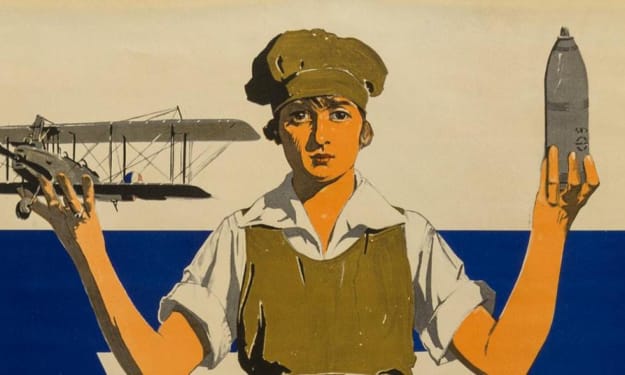Breaking the Stigma Against Toxic Male Masculinity
Men are told throughout their life to "man up," but hidden in that small phrase is a big message: to repress your emotions. Today, this mindset is starting to be challenged.

Living with a group of teenage boys might sound like a nightmare to most people. They can get obnoxiously loud when they have their friends over, create horrible messes in the kitchen, start outrageous house parties that last until four in the morning, and constantly flaunt their masculinity like a badge on their chest. However, this nightmare was a reality for third year Brock University student Tanya Moreira. Since Moreira was the only girl in the household, she picked up on a lot of her roommate’s traits, specifically relating to their masculine behaviours.
The boys in Moreira’s house acted like this because of their cultural ideologies. This philosophy of why men haves these cultural ideologies is because it becomes firmly engraved, always telling men that they shouldn’t show their emotions. Instead, they should be invulnerable and should always act like they are impervious to pain, Matthew Ventresca, post-doctoral fellow at Georgia Institute of Technology said. He said these values are perceived as being natural and have a long-standing idea that the present state of masculinity is a product of natural qualities and they can’t be changed. However, this is not the case.
“What masculinity fellows are trying to do is shed light on the fact that these are products of historical and geographical concepts that change over time, not some unchanging universal trait that men seem to have but a product of our society and how we organize them,” Ventresca said.
It all starts with the way society portrays men. For example, ideas about how men should act can date back to the ancient times. Men were seen as rational beings and women were seen as impulsive but more nurturing. Even though the world has evolved from then, this ideology has continuously been engraved in our society and in the minds of men that this is the only way to act in order to be masculine.
There is a long history of the limited ideas of masculinity as it is always being defined in opposition to femininity. There are certain traits that have been constructed as ‘normal’ or ‘inherent’ for women, such as crying and expressing emotions, that are devalued for men, University of Calgary professor William Bridel said.
“We expect men to be stoic, to be protectors, providers, and to be strong. This traditional way of thinking certainly continues to have influence and plays out in pop culture, in sport, in politics, and in business. I think in some ways these norms continue to be taught out of some misguided “fear” of a loss of male privilege,” he said.
Kevin Wamsley, Western University professor said it is more so the form of images, ideas, and symbols traditionally defined as belonging to the male sex that affect males, ultimately creating a sense of masculinity that influences one’s identity,
“It is learned through cultural meanings from those who are important to us, from television, movies, and the internet,” Wamsley said. “It creates a set of expectations about how we should behave as men, how we relate to other men or to women, and how we are judged and how we judge others.”
Moreira witnessed this influential masculinity when she noticed the behavioural shift in her roommates when they had their friends over. She said they would try to prove their masculinity, to make it seem they were the most ‘manly’ in the group. Based on what Wamsley said, the roommates seemed to be judging each other based on their view on women.
“One of my roommates, who had a girlfriend, was on the phone with one of his guy friends and had told him that he would still flirt with girls at the bar to be ‘for the boys,’” Moreira said.
Moreira was also shocked when she noticed her roommates would act differently when they were alone, away from their other guy friends. Without the pressure of proving their masculinity or the fear of being judged by their peers, Moreira said her roommates would confide in her when they were dealing with their emotions or their mental health. She called them “heartfelt conversations.” They would pour their emotions out to her since they knew they were under the safety of a masculine free zone.
“They would always come to me, even if they needed to cry, but whenever they had the same conversation with the other boys they would pretend it didn’t bother them at all,” Moreira said. “It was definitely not the same conversations they would have with me.”
According to Wamsley, this notion of pretending to act fine in front of guy friends relates to being taught how to show the “right” emotions. These emotions include anger or frustration since other emotions, such as empathy or sadness, are emotional responses that have been defined as more feminine.
“There is a significant social pressure to bury or avoid these emotions as they are characterized as weak,” Wamsley said.
Bridel believes that two things need to happen in order to eliminate the social pressure on men. “One, men need to be given permission to express their emotions without any kind of social sanctions or being stigmatized by others for doing so. Two, we need to redefine what it means to ‘be a man,’ so that expressing emotions as opposed to suppressing them is seen as strength and as beneficial to the health and wellness of boys and men.”
Before men can start showing their emotions with anyone, they must be comfortable with sharing them first, Venstreca said. With Moreira for example, her roommates felt safe in her presence, creating that willingness to bond with her. Being able to let people open up to one another is an important first step that often gets let out of the conversation.
“The more that we are able to [create public awareness for masculine behaviours and expression], the more I think we can create a context where it’s more acceptable for men or those who identify as masculine to share their emotions,” Ventresca said.
Having empathy for one's self and an understanding of emotions is one way to teach men that expressing emotions is natural and should not be considered un-masculine, certified marriage and family therapist Ellen Starr said. “I don’t think a lot of men know how to put words to their emotions.”
This might be due to the lack of education. Instead of being pressured to maintain their masculinity, men should be taught at a very young age that it is normal to show their emotions. Not only would this be encouraging for men, but it would also bring awareness to the harm of toxic masculinity. Ventresca believes that this modern, traditional sense of masculinity can be destructive, and things that have been associated with masculinity - such as violence and toughness - can affect everyone.
“A more inclusive understanding of masculinity will make life better for men, women, children, and people of any gender,” he said. “I think the more education we can do, including media [will be useful]. If we can create pop culture representations where there are different types of masculinity on display and celebrate it, people [will] learn from it.”
Communication is one huge factor to take into consideration when breaking down the stigmas around masculinity, specifically between the sexes, Starr said. Moreira’s heartfelt conversations with her roommates is an example of how communication can help, and is a step towards what Venstreca says are broader conversations around gender equality.
“This is not just about changing what men are doing and changing ideas about masculinity, but it’s also about the relationship between people of different genders, [and] masculinity and femininity,” he said.
There will always be resistance to change, no matter what the situation is Bridel said. It boils down to a desire to maintain traditional masculine norms, but there is a greater widespread awareness of the perils of like toxic masculinity.
“These traditional ideas are so limiting and are connected to serious mental and physical health outcomes. People are [however] recognizing that traditional ideas about being a young man have no real benefits for anyone,” Bridel said.
Similar to Bridel’s thoughts on a resistance to change, Wamsley said breaking down the stigma of masculinity won’t happen overnight. Wamsley believes that society has changed and will continue to change in the right direction provided that people actively resist the values being shown. However, Ventura argues that these changes to ideas about masculinity can’t happen in a vacuum, but they have to be part of changes to a broader gender order and movement towards broader gender equality.
“This is not just about changing what men are doing and changing ideas about masculinity, but it’s also about the relationship between people of different genders, masculinity, and femininity,” Ventresca said.
About the Creator
Ross Lopes
I am a 21-year-old Canadian. I enjoy reading, watching TV and writing. I am currently studying Journalism. It's taught me to never stop fighting to tell a story, to make an impact on an audience, and to capture the moment.






Comments
There are no comments for this story
Be the first to respond and start the conversation.